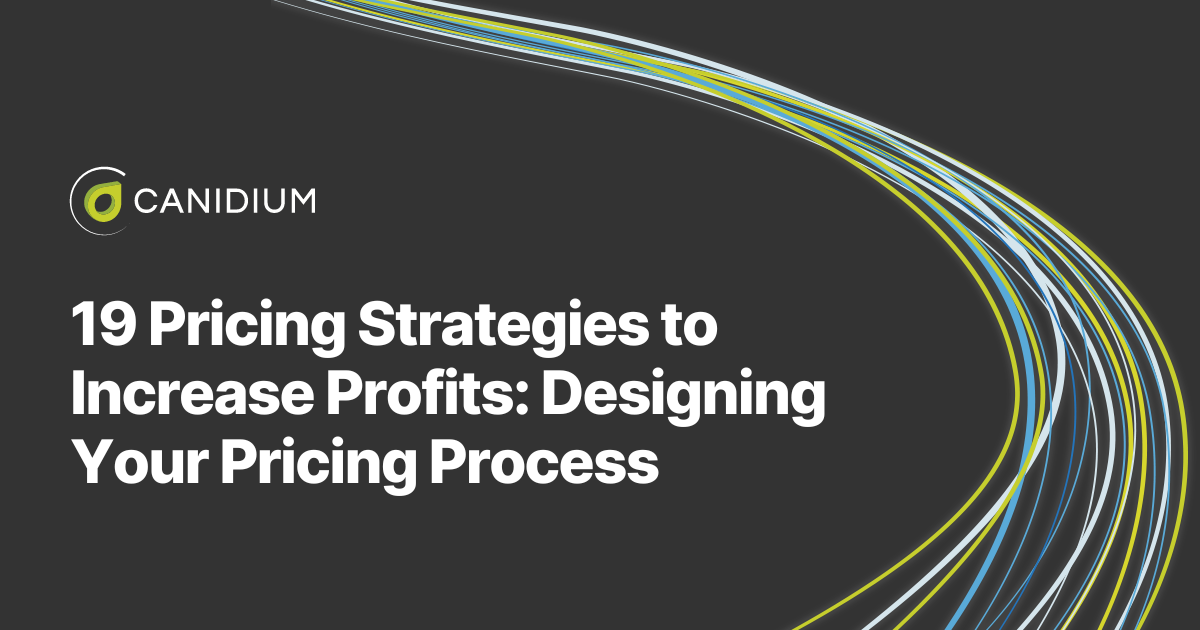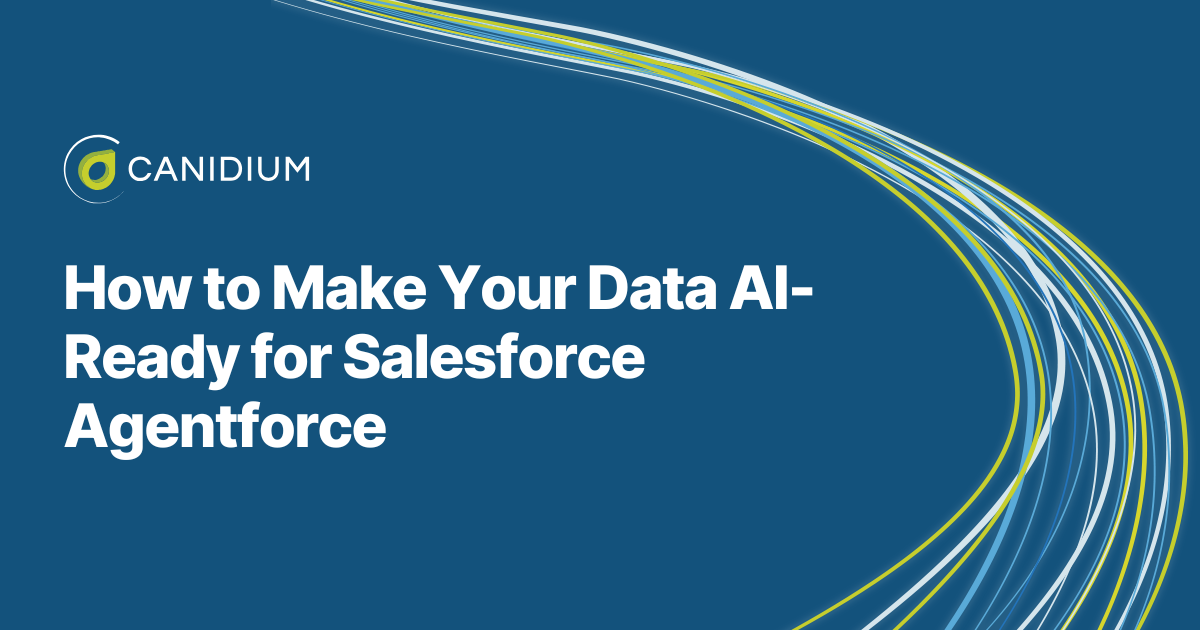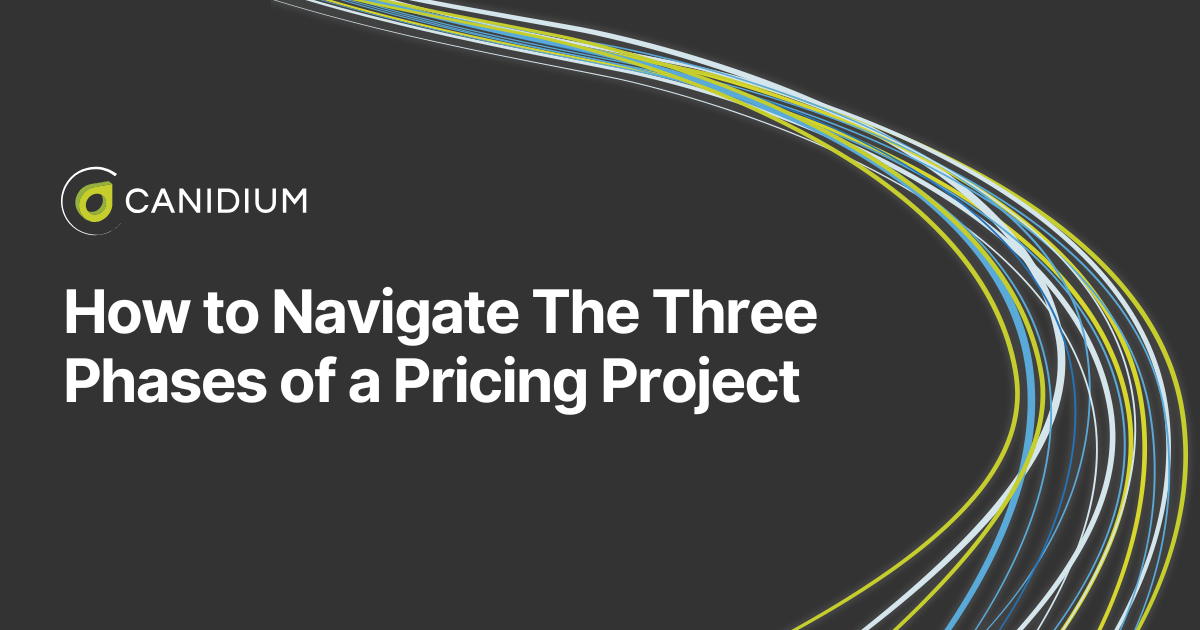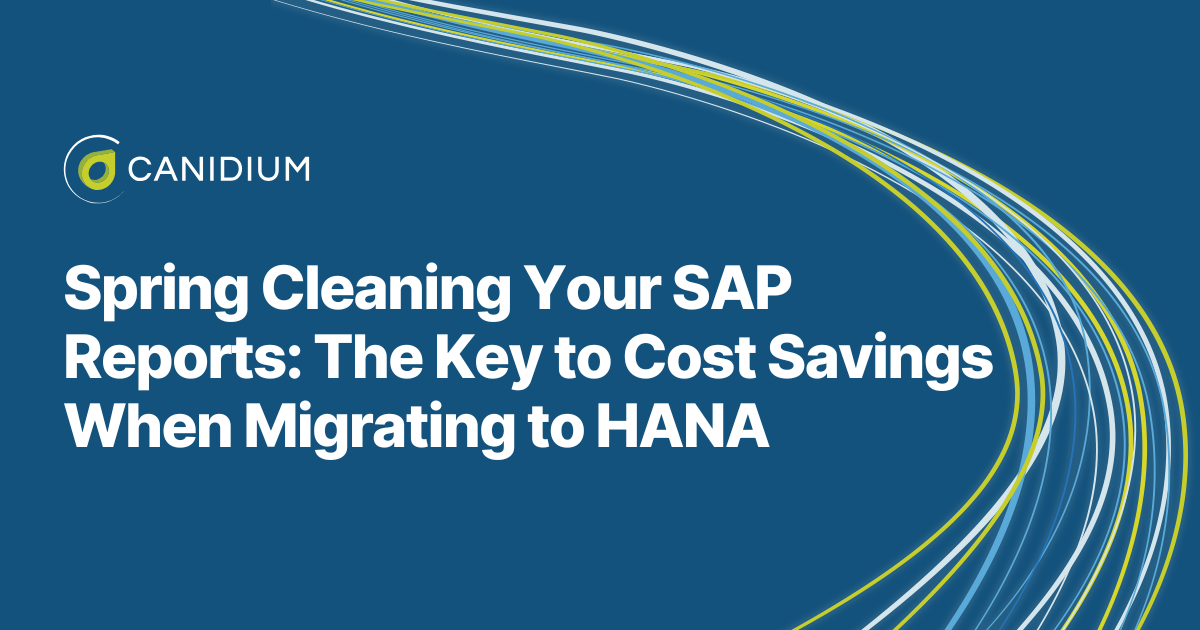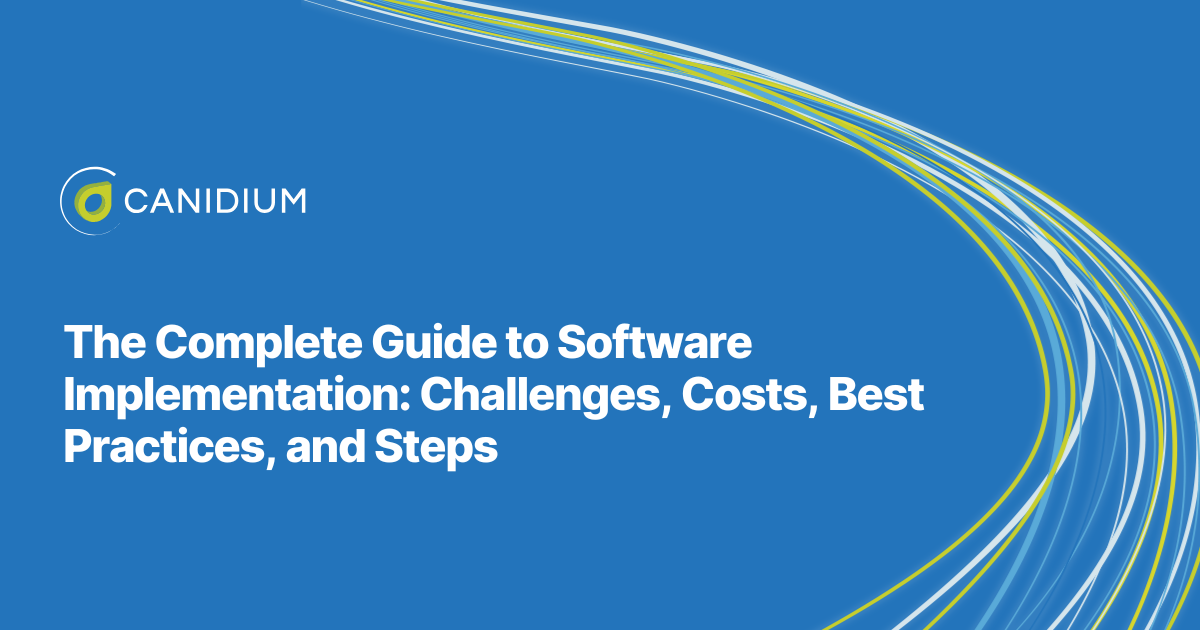Does your company's pricing structure yield the maximum profit off each sale? Is there any mechanism within your internal infrastructure to tell you how well your pricing strategies work?
Miniscule changes to your pricing methodologies can majorly impact your bottom line. You can increase your margins on every sale with the right pricing strategy.
Our pricing solution experts at Canidium design and implement advanced tools that automate pricing workflows and replicate pricing strategies at scale. We have extensive experience in strategic pricing across industries.
Based on this expertise, this article walks you through 18 pricing methodologies to increase revenue.
- 19 pricing methods that increase revenue
- Why does having a strategic pricing design matter?
- The benefits of strategic pricing
19 Pricing Methods That Increase Revenue
Your pricing structure directly impacts your financial margins. The more effectively optimized your pricing strategies are, the better your margins will be. In fact, according to McKinsey & Company, pricing strategies yield a 2-7% increase in returns on every sale. An effective pricing strategy has a measurable impact on your profitability.
There are many strategic ways to increase your revenue, but the following templates are good starting points:
.png?width=1920&height=1080&name=Why%20Does%20Having%20a%20Strategic%20Pricing%20Vision%20Matter%20(3).png)
1. Value-Based Pricing
The most common pricing strategy does not focus on the cost of production or target market factors. Instead, value-based pricing is a strategy where the cost of a product is primarily determined based on the perceived or estimated value it offers to customers rather than solely on the cost of production or market competition factors. This approach focuses on how much a customer believes a product is worth based on the benefits it provides, including both tangible and intangible elements. It is a form of psychological pricing.
To implement value-based pricing strategies effectively, businesses must thoroughly understand their customers' perceptions of value through detailed market research, identifying the key benefits customers prioritize. This insight allows you to segment the customer base into groups with similar value perceptions. The next step involves quantifying the value provided, considering both tangible and intangible benefits, and setting prices that reflect this perceived value. Communication is crucial; companies must clearly articulate their products' value, aligning their marketing strategies to highlight these benefits. Regularly revisiting customer feedback and market trends is essential to adjust pricing strategies, ensuring they remain aligned with customer expectations and market dynamics.
2. List/Net Price Strategy
Under this pricing strategy, you should define and prioritize list or net pricing strategies by product group. This involves identifying the primary list/net prices for each product and creating up to four fallback strategies if the primary strategy isn't applicable. When implementing this, you must analyze your product portfolio and market conditions to set realistic and competitive prices. You'll also need to develop backup strategies to maintain pricing flexibility and responsiveness to market changes. This approach ensures a structured pricing framework that adapts to different scenarios.
3. Base Price Strategy
You are responsible for setting base prices in addition to the list/net prices for your products, focusing on maintaining principal pricing guardrails. To implement this strategy, establish a set of base prices that adhere to your company's pricing guidelines, such as minimum and maximum price limits. This ensures consistency and fairness in pricing across all products and market shares. Consider cost structures and the competitive landscape in your pricing decisions to align your strategy with overall business goals.
4. Line Item Price & Price Strategy Exceptions
Under this strategy, you will handle exceptions in pricing strategies for specific products at the country level. To do this effectively, define clear criteria for when and how exceptions are applied. This might involve tailoring prices based on local market conditions, economic factors, or competitive actions. Implementing this strategy requires flexibility and a deep understanding of each market's unique characteristics, ensuring that price adjustments are both strategic and responsive.
5. Line Item Price & Price Strategy Overrides
Unlike strategy four, this approach is more granular, focusing on specific items or SKUs rather than broad market conditions. Your task is to override the default pricing strategies at the SKU level when necessary. Set manual price points that strategically override system-suggested prices based on specific business considerations, such as promotional efforts or inventory levels. Effective implementation involves closely monitoring market trends and internal business needs to make informed pricing decisions that can respond dynamically to changing conditions
6. Penetration Pricing Strategy
Penetration pricing is a marketing strategy companies use to initially attract customers to a new product or service by offering a lower price. The goal is to gain market share quickly by making the entry price more attractive than competitors. Once a significant customer base is established or market share is captured, prices gradually increase to normal levels.
Penetration pricing involves launching a product at a significantly lower price than competitors to attract customers and gain market share. The initial price is set below market rates; this strategy draws customers away from competitors and accelerates market entry. As sales volume increases, the company benefits from economies of scale, which can help mitigate the lower profit margins associated with the reduced pricing. Once a substantial customer base is secured and the product is firmly established in the market, the company gradually raises the economy price to more sustainable levels, balancing the need to maintain the newly acquired market share with achieving profitable operations. This approach is efficient in highly competitive or price-sensitive markets.
7. Cost-Plus Pricing Strategy
Implement a cost-plus pricing strategy by adding a predefined margin to the cost of products. Calculate the total cost of production and add a margin percentage that ensures profitability while remaining competitive. This strategy is a reliable fallback when market-based pricing is unfeasible or uncertain. It's instrumental in industries with stable cost structures and high-cost predictability, allowing straightforward calculation and application.
8. Competitive Pricing Strategy
An overwhelming 86% of consumers say comparing prices between sellers before buying is essential. To set competitive prices, collect and analyze competitor pricing data. Base your pricing decisions on a competitive index: the lowest, highest, or average prices. This strategy requires ongoing market share research and competitor analysis to ensure your pricing remains relevant and competitive. It's a dynamic approach that helps adapt pricing strategies based on real-time market conditions and competitor actions.
9. Predefined Price Strategy
Establish a set of standard prices based on prior agreements, like the manufacturer's suggested retail price (MSRP) or contractual pricing. This method simplifies the pricing process and ensures compliance with agreed-upon pricing standards. It's especially effective when pricing needs to be consistent and predictable, facilitating straightforward communication and understanding among customers and partners.
10. Net Price Strategy
Develop a clear structure for net prices that can be quickly applied across various scenarios and target customer segments. This involves setting prices based on predefined net or net/target prices, streamlining the decision-making process. This strategy is ideal for fast-paced environments where pricing decisions must be made swiftly and efficiently, ensuring sales agility and responsiveness.
11. Freemium Pricing
Freemium pricing is a popular business model, particularly in the digital goods and services industry. In this model, a company offers a basic version of its product or service for free while charging a premium for advanced features or additional services. This strategy is designed to attract a large base of users by removing the initial cost barrier, encouraging widespread adoption, and then monetizing a portion of those users through upgrades to paid versions.
12. Anchor Price Strategy
Set prices based on the price of another key product (anchor) and apply adjustments for related products. This helps maintain a logical relationship between prices, ensuring that price changes in one product logically reflect on others. This method requires a strategic overview of product relationships and price impacts, making complex product lines with interdependencies essential.
13. Kit Price Strategy
Price kits are based on the total cost of their components. Sum up the prices of each part and consider any bundle discounts to determine the total kit price. This approach requires a detailed understanding of the individual component production costs and the value of the kit as a whole, ensuring that the kit is attractively priced yet profitable.
14. Strategic Price Increase Business Rules Definition
You are in charge of establishing rules for when and how prices can be increased. Set clear guidelines regarding the triggers, timing, and limits of price increases to ensure transparency and consistency in price adjustment. This strategy is crucial for maintaining customer trust and managing expectations, particularly in volatile markets.
15. Price Skimming Strategy
Price skimming is a pricing strategy in which a firm charges the highest initial selling price that customers will pay for a new product and gradually lowers the price over time as the demand from higher-paying customers is satisfied. This approach is often used for innovative or highly desired products entering the market, where the novelty or unique features justify a premium price. Price skimming aims to maximize profits in different stages of the product lifecycle while capturing the consumer surplus from various market segments.
The market naturally segments itself into layers based on willingness to pay. Early adopters purchase at high sale prices, and as their demand is satisfied, the price is lowered to attract the next layer of more price-sensitive customers.
16. Strategic Minimum Margin Definition
Define each product's lowest acceptable profit margin to ensure profitability while staying competitive. This involves analyzing cost structures and market prices to set minimum margins that protect your bottom line while allowing competitive flexibility. Regular review and adjustment of these margins might be necessary to respond to changes in production costs or market conditions.
17. Price Corridor Verification
Regularly audit prices to ensure they do not deviate from established price corridors, adjusting as necessary to maintain alignment with strategic pricing goals. This includes checking that all prices fall within predefined limits and adjusting to realign with those corridors as needed. This ensures that your pricing strategies remain consistent and aligned with your overall business objectives, protecting market position and profitability.
18. Economy Pricing Strategy
Economy pricing is a cost-focused strategy where business owners set low prices for their products or services to attract the most price-sensitive consumers. This approach involves minimizing costs to maintain profitability at lower price points. Economy pricing is commonly used in highly competitive markets or for commoditized products where differentiation based on features or quality is difficult.
19. Premium Pricing Strategy
Last but not least, premium pricing, also known as prestige pricing, is a business model in which companies set their product or service prices significantly higher than the market average. This approach capitalizes on the perceived superior quality or value of the product, often enhanced by a strong brand reputation or unique product features, and is not geared toward price-sensitive customers.
Leveraging a premium price is a way to create an exclusive image that attracts status-conscious consumers who are willing to pay more for products that symbolize luxury, high quality, or exceptional service.
Why Does Having a Strategic Pricing Design Matter?
A 1% pricing increase yields an 8.7% increase in operating profits. However, the same study estimates that 30% of companies' pricing decisions are not delivering the best price. While the exact profit impacts and losses your company sees as a result of pricing depend on your industry, business structure, and market factors, these figures give us a general theoretical understanding of how pricing impacts your bottom line. For example, based on these figures, we can theoretically calculate the potential losses a company may experience due to suboptimal pricing.
Assume the total potential profit increase achievable through optimal pricing across all products/services would be a full implementation of the 1% price increase, leading to an 8.7% increase in profits. However, because 30% of pricing decisions are suboptimal, this portion of the product/service range does not achieve the 8.7% profit increase.
Estimated Loss in Profit Increase: 30% × 8.7% = 2.61%
This equation means that due to suboptimal pricing decisions, the company may not realize 2.61% of the operating profits it could achieve if all pricing were optimal. To put this in perspective, if the company's current operating profit is $100 million annually, then due to suboptimal pricing, it is potentially missing out on $2,610,000 annually.
Suppose prices are set too high due to suboptimal decisions. In that case, consumer demand may decrease as customers turn to competitors or defer purchases. Conversely, if prices are too low, while volume may increase, the revenue per unit could be insufficient to cover overhead costs and desired profit margins, leading to reduced profitability. Both scenarios negatively affect the total revenue through fewer units sold or lower revenue per unit. In short, engaging in a strategic pricing method has a direct, significant, and measurable impact on your bottom line, and the clarity of your pricing vision informs your strategies' success.
The Benefits of Developing Strategic Pricing
Beyond the notable financial gains you will see from implementing a strategic pricing plan, there are several less tangible positive impacts you can expect, including the following:
.png?width=1920&height=1080&name=Why%20Does%20Having%20a%20Strategic%20Pricing%20Vision%20Matter%20(4).png)
Defining Success
You cannot manually manage your strategies when engaging in effective pricing at an enterprise or mid-level business scale. You need to implement a strategic pricing tool. Heading into this implementation, starting with a clear vision of what success looks like for your organization is critical. This means you must establish specific, measurable goals aligning with your overall business objectives. Identify the top three to five key areas where your pricing model and execution require improvement.
Focusing on these areas will help you manage the scope of your project effectively. You will avoid the common pitfall of trying to address too many issues at once, which can dilute results and complicate the implementation process.
Solving Pricing Problems
When addressing pricing problems, it's crucial to understand that the apparent success of meeting financial targets might often conceal deeper profitability issues. These can arise from suboptimal pricing strategies that fail to maximize profit margins or adequately respond to market conditions.
A thorough review of your current pricing processes is essential to tackle these challenges effectively. Start by examining how prices are currently determined. Understand the underlying logic and methodologies—be it cost-plus pricing, competitive pricing, value-based pricing, or another approach. It's essential to evaluate how well these methods have been working. Are they responsive enough to changes in cost inputs, customer demand, or competitor actions? Do they allow quick adjustments that capitalize on market opportunities or defend against competitive pressures?
Developing a robust pricing strategy helps you overcome these obstacles, eliminating the problems that reduce your profit margins.
Preparing for Pricing Software Implementation
Preparation is critical to a successful pricing software rollout. You must define what success will look like for your project and identify a reasonable number of significant problems your new system should solve.
Understanding your current pricing mechanisms is crucial; you need to know how prices are set and what calculations are involved to translate this information into the new system accurately. Additionally, prepare by organizing your customer data, product data, and sales transaction information. This groundwork will not only smooth the transition but also optimize the functionality of your new pricing software, enabling more accurate and dynamic pricing strategies.
Replicating Your Pricing Process With Software Tools
Suppose you already have a robust strategy in place. In that case, you can replicate and automate your process in your new pricing solution. Your implementation partner configures your solution to fit your pre-existing workflows.
To effectively replicate your pricing process with software tools, you must first clearly understand your existing pricing methodologies and how they align with your strategic goals. Solutions like Pricefx are highly flexible and capable of accommodating a wide range of pricing strategies, whether cost-plus, competitive, or based on other pricing frameworks.
When transitioning to a new pricing software, it is crucial to document and understand all your current pricing processes thoroughly. This includes knowing the calculations and data inputs that drive your pricing decisions. The software should then be configured to mirror these processes, potentially enhancing them with more automation and analytical capabilities.
Moreover, the software's flexibility should not be seen as a way to replicate existing practices. It also offers an opportunity to refine and improve these processes based on insights gained from data analytics and industry best practices provided by the software. This might involve reevaluating how you set prices, moving from manual, spreadsheet-based methods to more dynamic, algorithm-driven approaches that can react in real time to market changes.
It's also important to remain open to recommendations from your software implementation partner. They can offer valuable insights into how other clients have optimized their pricing strategies and suggest ways to adjust your processes for better results. This collaborative approach can significantly improve how you price your products, ensuring that the software not only replicates but also enhances your current pricing capabilities.
Lastly, always maintain flexibility in your approach. While it's critical to have a well-defined vision of how you want your pricing tools to function, be prepared to adapt based on the software's capabilities and the evolving needs of your market. This ensures that your pricing strategies remain robust, responsive, and aligned with your business objectives, maximizing profitability and increasing your competitive edge.
.png?width=1920&height=1080&name=Why%20Does%20Having%20a%20Strategic%20Pricing%20Vision%20Matter%20(5).png)
The Benefits of Visualizing a Strategic Approach to Pricing
A clear, strategic pricing vision is beneficial beyond mere financial gains. It includes developing a deeper understanding of existing pricing processes and ensuring that any new pricing software replicates and enhances these processes. Businesses can ensure that their pricing strategies are robust and aligned with their overall objectives by strategically planning the implementation of pricing tools and maintaining flexibility based on evolving market needs and software capabilities.
This approach helps prevent potential losses that can arise from suboptimal pricing decisions and positions companies to better respond to market dynamics and potential customer needs. Ultimately, by adopting and refining strategic pricing practices, businesses can achieve a more decisive competitive edge and realize significant improvements in profitability.
Now that you have a firm grasp of strategic pricing, your next step is to learn more about pricing software solutions. Start with this guide to beginning a Pricefx project.


